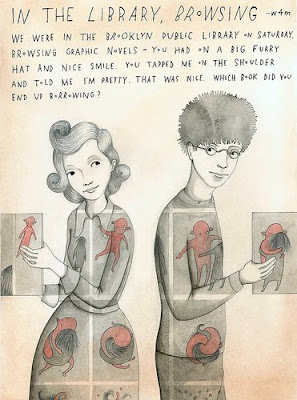While all of the literary elements play a crucial role in creating understanding of the overall story, there are several that I find to be the most important and play a significant role in understanding and connecting with the story. Point of view is first and foremost important if you ask me. It is very difficult to begin to understand a story if we are unsure of who the narrator is. The story can be told in first person, third person, a combination of both, or a variation in between. There is a large difference between a story told in third person and a story told in first person. The difference is that in one instance, we are inside a particular character’s head, and in the other, we are told about the story events by an outside party or perspective. The perspective that dominates the story greatly alters our experience with the story, our understanding of the events, and our connection with the characters. My personal favorite stories and books are ones in which the story is told from the first person, but specifically from the first person of multiple characters. For example, Jodi Picoult’s books are told from the first person perspective of each of the characters, and they alternate from chapter to chapter. I find this to be one of the most effective ways to get to know the characters on a deeper and more emotional level. Without a clear sense of the point of view that the story
Another almost equally critical component to the understanding of a story is the sense of time. Without a clear understanding of how time interacts with the underlying story line, the reader can easily become confused and lost in the story. Time is directly tied to the action that occurs throughout a story, and can be varied to include present tense, past tense (often in the form of flashbacks), and even future events. Time, when used properly, can add immense understanding and interest to a story. When time is unclear or not done properly, it can lead to great confusion in the reader and a lack of understanding. Great books impeccably intertwine the element of time with the other literary elements, to the point where we, as readers, do not even need to consider the aspect of time. It is so naturally included that we almost forget that it is there, yet it obviously must be there in order to move us through the action of the story. Good writers make the inclusion of time seem effortless, allowing the reader to get lost in the action without having to devote conscious thought to determining the role that time plays in the story.
Characters are critical to completing a story. While they might not be crucial to the understanding of the story, they definitely add depth and meaning to the plot and action. IT can be difficult to understand both the point of view and the time sequence if we do not have an understanding of the characters. The characters are so critical because it is with them that we, as readers, truly connect. Good quality books are those that have personable, concrete, and dynamic characters. Characters play a large role in determining the mood of the story and helping us connect on an emotional level. It is through the characters that we really appreciate a story. Place is a second literary component that is very important, yet not critical to understanding a story. Understanding the place in which a story occurs can definitely help us make meaning and truly understand a story. Place does not just refer to a specific location, country, state, or town, but also includes where the characters interact and during what time period the story takes place. For example, does the story take place in the 1900’s, or in the future? These differences play an important role in how the story is understood by the reader.
The other literary elements interact with the point of view, time, characters, and place to provide a meaningful experience for the reader. Well-written stories use all of these separate elements in a subtle, yet important interaction to provide a wonderful and enthralling story. These literary elements not only make the story interesting, but they also aid in the understanding of the most basic elements of the story.














